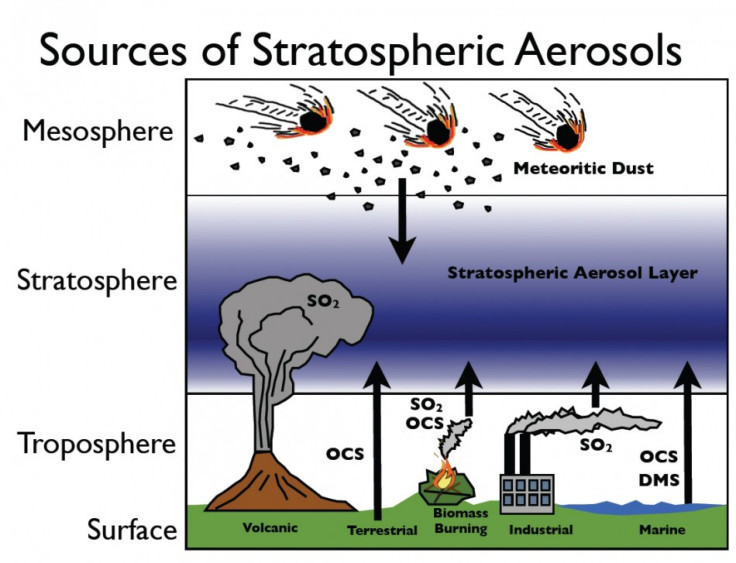Global Warming Muted in 2000s by Aerosols: Can This be Engineered?

Global warming, a detectable trend in the 1980s and 1990s, all but disappeared in the 2000s.
A new study from the National Oceanic and Atmospheric Administration (NOAA), published Thursday in journal Science, suggested aerosols in the earth's stratosphere are the cause.
The aerosols, or tiny particles suspended in air, reflect the sunlight back into space. This shielding has offset about 0.1 watts per m² of heating for the 0.28 watts per m² of heating caused by man-made carbon dioxide emissions, according to NOAA scientists.
The scientists, using several independent sources like ground instruments and satellites, determined there was a definitive increase in stratospheric aerosol since 2000.
They don't exactly know where the increase came from, but likely suspects are volcanic eruptions and human activities that emit sulfur dioxide (like fossil fuel combustion at power plants).
The study said projections for the effect of carbon emissions on global warming can vary by almost a factor of two depending on projections of the amount of aerosols in the atmosphere.
For example, if aerosol levels increase like they did in the 2000s, global warming will likely be muted. However, if they decrease like they did in the 1960s, global warming could accelerate.
The buffer effect of aerosol begs an interesting question: could man manipulate global temperatures by artificial techniques like putting aerosols in the atmosphere?
Scientists are already thinking about this possibility. They even have a name for it: geo-engineering.
In 2009, John Holdren, science advisor to President Barack Obama, told the Associated Press that geo-engineering should be used if global temperatures rise too fast.
One approach is to put sulfide gases into the atmosphere by artillery, aircraft, or balloons. The goal is to essentially replicate the aerosol impact of a volcanic ashes. However, Holdren acknowledged that doing so could have side effects, especially on precipitation, and the decision shouldn't be taken lightly.
Another approach is to use artificial trees or iron fertilization (which stimulates algae growth) to absorb carbon dioxide.
The Associated Press reported that the National Academy of Sciences and the British parliament have also discussed the idea of geo-engineering.
For a comprehensive view on this topic, read this paper.
© Copyright IBTimes 2025. All rights reserved.





















